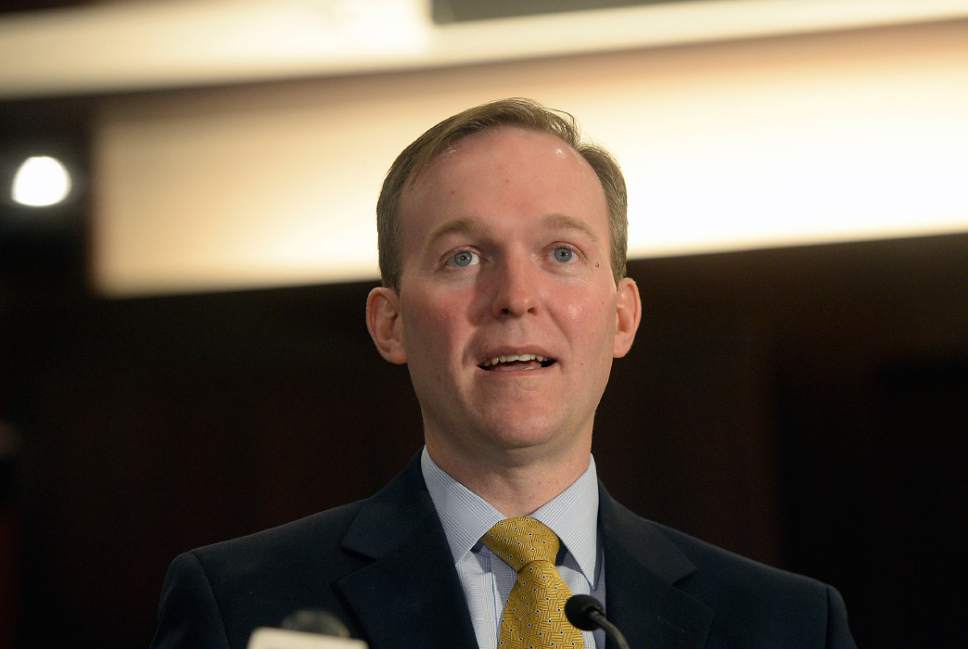This is an archived article that was published on sltrib.com in 2017, and information in the article may be outdated. It is provided only for personal research purposes and may not be reprinted.
Did we have some fun with that homeless shelter site-selection process?
Good, because now comes the hard part.
With Salt Lake County Mayor Ben McAdams announcing Friday that the third planned shelter will be in South Salt Lake near the county jail, we now — finally — have our three locations for a new generation of facilities to move past the chaos that now surrounds the Rio Grande shelter in downtown Salt Lake City.
Technically, the Utah Legislature still needs to sign off on the last choice, but it doesn't seem likely they will balk at McAdams' selection. So the site at 3380 S. 1000 West joins two others in Salt Lake City at 131 E. 700 South and 275 High Avenue.
The locations come almost 2 ½ years after then-Salt Lake City Mayor Ralph Becker — responding to pressure from Rio Grande area property owners — established his Homeless Service Site Evaluation Commission to look at alternatives.
During that time the homeless population increased and the deterioration of the Rio Grande area accelerated. When it finally came time to choose new sites, no neighborhood – even those that are mainly industrial – wanted any part of whatever would follow Rio Grande.
That NIMBY-fueled revulsion hit its climax earlier this week when Draper Mayor Todd Walker offered up two sites in his city, only to face an angry mob of constituents who started talking about impeaching him. (There's no law for that.) Walker's offer lasted all of about 30 hours before he pulled it back.
Residents of the three selected neighborhoods cannot be comfortable with the decision because, honestly, none really knows what lies ahead. They have to stake their hopes on a commitment from community leaders — from the governor on down — that this is about fixing the system for homeless people, not just moving it. Fixing in this context means keeping better track of the homeless and making sure they are plugged into services that can lift them up instead of just maintaining their status quo.
Still ahead is deciding how to break up the populations. It appears that the three facilities will include one that's only single women, one that's only single men and one that includes both men and women. It's the center for single men – the largest population and the one with the most crime issues — that draws the most angst.
Then there's the question of those still on the outside. No matter how many people are helped by improved facilities and services for the homeless, there still will be a population that won't do it. Correspondence obtained by Salt Lake Tribune reporter Matt Piper shows there is still talk of yet another site to handle "drunk tank overflow." And how about the free meals given out at the St. Vincent de Paul Dining Hall across the street from the Rio Grande shelter? If the shelter closes but the dining hall remains, will Rio Grande still be where all the hanging out (and drug dealing) happens? If it moves, which neighborhood has that to look forward to?
And with operating shelters still at least 18 months away, we still have an immediate crisis to solve. Salt Lake County Sheriff Jim Winder's emergency plan — which includes confiscating bicycles, closing a downtown liquor store and setting up a tent city — has not been embraced by other leaders, but it does speak to the neighborhood's desperation.
It took too long to get to this point, but the commitment to building new homeless facilities is wide and deep. State leaders recognize it's not just a Salt Lake City or County problem, and they are backing that up with millions. Philanthropists also have committed to doing their part to get new facilities off the ground.
We have the where. Now we just need the who, the when and the how.



